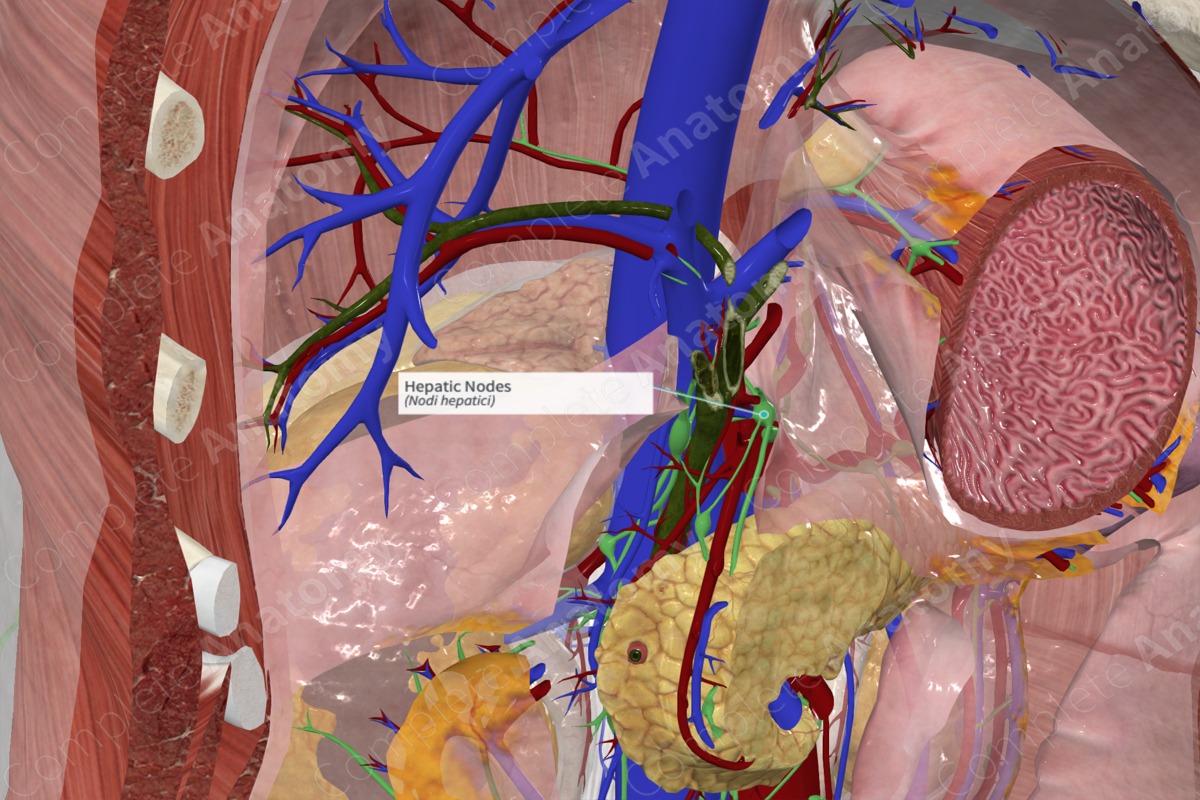
Quick Facts
Location: Along the common hepatic artery.
Drainage: Liver.
Direction of Flow: Preaortic and lateral aortic lymph nodes > intestinal trunk and left lumbar trunk > cisterna chyli > thoracic duct.
Description:
Description: (Location & Drainage)
The hepatic nodes are located along the common hepatic artery. These nodes can be divided into two groups, the central and peripheral nodes. The central nodes, consisting of one to four nodes, are found along the horizontal part of the common hepatic artery. The peripheral nodes, consisting of two or three nodes, are found within the hepatoduodenal ligament, adjacent to the ascending part of the proper hepatic artery and the portal vein (Földi et al., 2012).
The afferent vessels of the peripheral nodes begin in the liver and drain into the central nodes. The afferent vessels of the central nodes also receive lymph from the pyloric, gastroomental, and pancreaticoduodenal nodes. Their efferents connect to the celiac and uppermost pancreatic nodes and they terminate in the preaortic and lateral aortic nodes (Földi et al., 2012).
References
Földi, M., Földi, E., Strößenreuther, R. and Kubik, S. (2012) Földi's Textbook of Lymphology: for Physicians and Lymphedema Therapists. Elsevier Health Sciences.
Description:
Description: (Location & Drainage)
The hepatic nodes are located along the common hepatic artery. These nodes can be divided into two groups, the central and peripheral nodes. The central nodes, consisting of one to four nodes, are found along the horizontal part of the common hepatic artery. The peripheral nodes, consisting of two or three nodes, are found within the hepatoduodenal ligament, adjacent to the ascending part of the proper hepatic artery and the portal vein (Földi et al., 2012).
The afferent vessels of the peripheral nodes begin in the liver and drain into the central nodes. The afferent vessels of the central nodes also receive lymph from the pyloric, gastroomental, and pancreaticoduodenal nodes. Their efferents connect to the celiac and uppermost pancreatic nodes and they terminate in the preaortic and lateral aortic nodes (Földi et al., 2012).



